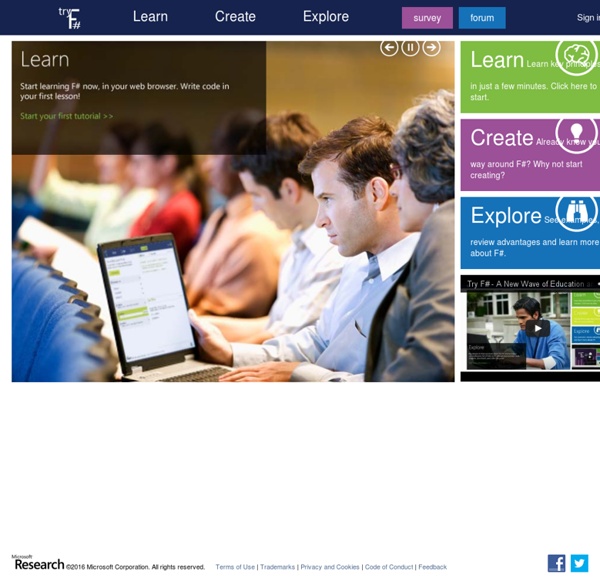Try F#

F# Training | The F# Software Foundation
The following websites, companies and groups offer training in F# and its applications. If you provide training for F#, please submit your material by editing this page on GitHub and submitting a pull request. Professional Training PluralSight: F# Functional Data Structures Authored by Kit Eason, this online course describes the important data structures - especially collections - available in F#, together with the functions which F# provides for working with them. PluralSight: A Functional Architecture with F# Authored by Mark Seemann, this online course provides an example of how to build a mainstream application in F#, using extensive demos to build a comprehensive demo application from scratch. F# and Functional Programming in Finance This online course is a practical introduction to the F# language, functional programming and their use in the financial domain. Fast Track to F# with Tomas Petricek and Phil Trelford Chris Marinos’ F# Training FPBridge F# Training Intellifactory F# Training
Related:
Related:



